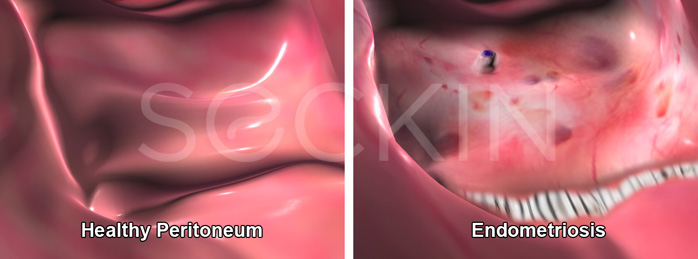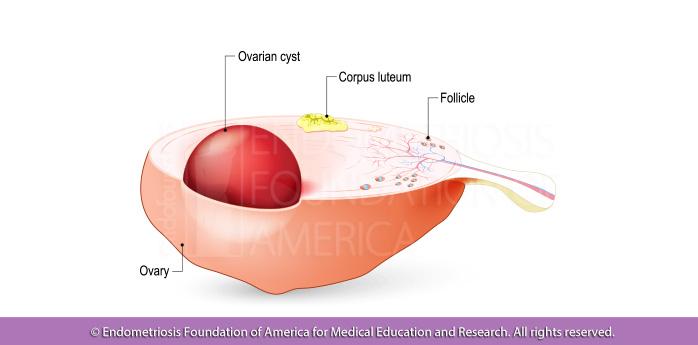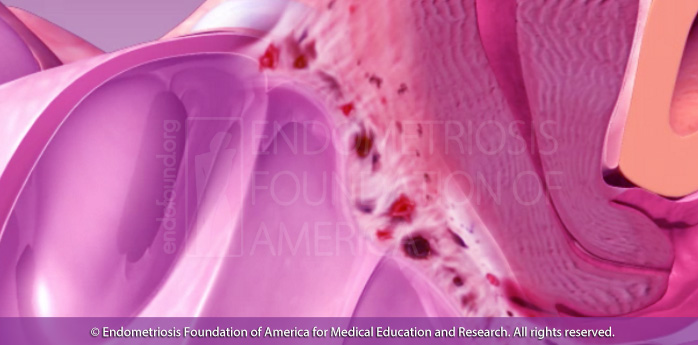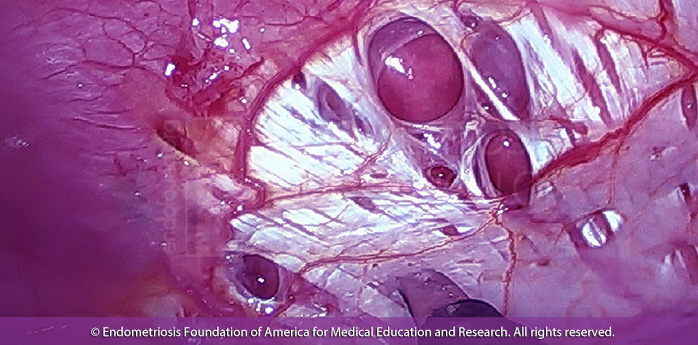What are the different stages of endometriosis?
Endometriosis can be classified into *four stages. The American Society of Reproductive Medicine (ASRM) bases these stages on the lesions themselves, particularly the number of endometrial implants and their depth. However, the ASRM revised their classification to include a point system. This point system allows for a way to numerically scale the disease and help determine classification. A score of 15 or less indicates minimal or mild disease. A score of 16 or higher may indicate moderate or severe disease. It is important to note that the stage of the disease does not necessarily reflect the level of pain or presence of symptoms.
The stages of endometriosis as classified by the ASRM are:
| Stage I (1-5 points) |
|
| Stage II (6-15 points) |
|
| Stage III (16-40 points) |
|
| Stage IV (>40 points) |
|
While these are the official numbered stages of endometriosis as identified by the ASRM, the Endometriosis Foundation of America has proposed using more descriptive categories. This is because every numbered stage has so many variations and does not give any insight into the patient’s pain or where lesions can be localized. Therefore, EndoFound classifies endometriosis by its anatomical location within the pelvic and abdominal cavity. They are:
-
Category I: Peritoneal endometriosis
The most minimal form of endometriosis in which the peritoneum, the membrane that lines the abdomen, is infiltrated with endometriosis tissue.

-
Category II: Ovarian Endometriomas (Chocolate Cysts):
Endometriosis that is already established within the ovaries. These forms of ovarian cysts are of particular concern due to their risk of breaking and spreading endometriosis within the pelvic cavity.

-
Category III: Deep Infiltrating Endometriosis I (DIE I)
The first form of deep infiltrating endometriosis involves organs within the pelvic cavity. This can include the ovaries, rectum, uterus, and can even lead to such drastic cases as “frozen pelvis.”

-
Category IV: Deep Infiltrating Endometriosis II (DIE II)
The other more extreme form of DIE involves organs both WITHIN and OUTSIDE the pelvic cavity. This can include the bowels, appendix, diaphragm, heart, lungs, and even the brain.

These categories are defined by the necessity and complexity of the organs they involve. In other words, due to the complex treatment, various anatomical involvement, and expertise and skill that is to be utilized by different surgeons, EndoFound prefers to use this descriptive classification system.
-
Category V*
Patients with diffuse endometriosis, involvement in multiple locations or organs, and severe adhesions are often said to have stage 5 endometriosis. Stage 4 is a score of 40 or higher of the 150 total points in the revised American Society of Reproductive Medicine (rASRM) scoring system (1996). The rASRM has the same scores as its basis, the revised American Fertility Society (rAFS, 1985).
Although there is no official stage 5, Canis et al. (1992) suggested using a revised American Fertility Society (rAFS, 1985) score of >70 as a new stage 5 for endometriosis. This score also represents a severe degree of difficulty of surgery or a low chance of fertility. The rAFS (or rASRM) staging system is the one most used in surgical research. It is useful in comparing the gross appearance at the beginning of surgery and is somewhat predictive of surgical difficulty. But it is not predictive of fertility, pain, the depth of infiltration, or the volume of infiltrating endometriosis.
Adamson and Pasta’s Endometriosis Fertility Index (EFI) (2010) uses a similar rASRM score of ≥ 71 to represent a low chance of pregnancy without in vitro fertilization (IVF). The EFI is used to calculate pregnancy rates following endometriosis surgery. The score is based on the appearance at the end of surgery and is the only scoring system, not a staging system, that predicts fertility accurately. It has been confirmed in multiple publications. Scores of 71 and higher are generally seen only with severe adhesions and fertility generally requires IVF. Adhesions are a type of scar tissue that can block the pathway of the eggs from the ovary to the tube.
References
- Endometriosis – Morphology, Clinical Presentations and Molecular Pathology, Neha Agarwal, Arulselvi Subramanian
- Revised American Society for Reproductive Medicine classification of endometriosis: 1996, American Society for Reproductive Medicine
- What are the stages of endometriosis?, Tamer Seckin, MD
- Adamson GD & Pasta DJ. Endometriosis fertility index: the new, validated endometriosis staging system. Fertil Steril 2010;94(5):1609–15
- American Fertility Society. Revised American Fertility Society classification of endometriosis 1985. Fertil Steril 43(3):351-352, 1985
- American Society for Reproductive Medicine classification of endometriosis: 1996. Fertil Steril 67(5): 817-21, 1997
- Canis M, Pouly JL, Wattiez A, et al. Incidence of bilateral adnexal disease in severe endometriosis (revised American Fertility Society [AFS], stage IV): should a stage V be included in the AFS classification? Fertil Steril 1992;57:691–692.

